Learning how to make cannabis oil is simple, effective and relatively safe if you use the right equipment and take the proper safety precautions. Anyone can learn how to make cannabis oil; even people who don’t use cannabis at all. This means that if you are learning how to make cannabis oil (also called hemp oil, Rick Simpson oil and Phoenix Tears) for a loved one who is ill, you can feel confident that you can produce a fine grade oil that is safe to use and – in many cases – will significantly improve the quality of life of the individual who is responsibly using it.
UPDATE 2016: I strongly recommend the coconut oil method of making cannabis oil. If you’re making RSO or any other solvent-based oil at home, then chances are that there are impurities and possibly even toxins present in your finished products. Instead, virtually anyone can make cannabis infused coconut oil without solvents or special equipment. To learn more and for recipes and instructions on making the oil using this method, please see the following comprehensive post:
How to Make Cannabis Infused Coconut Oil
If you need to make solvent based oil, please continue reading the post below:
In this article, you will learn how to make cannabis oil of exceptional quality and potency. Most of the items that you will need to make the oil are inexpensive and easy to acquire – with the exception of the source marijuana. Considering that this is the most important part of making cannabis oil, it is critical that you start with the right marijuana. However, before we go any further, please read the following important disclaimer:
DISCLAIMER:
This article is not meant to be construed as professional medical, pharmaceutical or chemical engineering advice. The person/s attempting to make cannabis oil using these methods accept full responsibility and accountability for any repercussion relating to the illegality of the product, ingredients or processes discussed herein, as well as full responsibility for any dangers or harm that result from the production and/or use/consumption of cannabis oil. These risks include:
- Arrest and incarceration
- Explosion/fire/burns
- Toxic gases
- Severe intoxication resulting in or causing injury

This article is not designed to and does not make a statement about the efficacy of cannabis oil as a treatment for cancer or any other major illness. This author believes that substantial research must occur before definitive statements can be made in this regard. Therefore, it must be understood that taking even a very pure medical grade cannabis oil may not produce the desired results (or any results) and may include undesirable side effects.
Any person who reads beyond this point in the article explicitly agrees that they (the reader) are 100% responsible for any and all actions that arise as a result of making cannabis oil. Readers also agree that this article is meant solely for educational purposes and the author does not recommend attempting to produce cannabis oil if the reader lives in an area where it is illegal to do so or where they will place any person at risk of injury or other harm, including harm from the migration of solvent fumes. Readers also understand and agree that taking cannabis oil may not benefit them in any way whatsoever.
Anecdotal Evidence & My Personal Experience
All of the photographs and methods described herein are derived from cannabis oil projects that I have personally undertaken. Making cannabis oil became a necessity when increasing numbers of terminally ill people began contacting me asking for assistance in acquiring the oil.
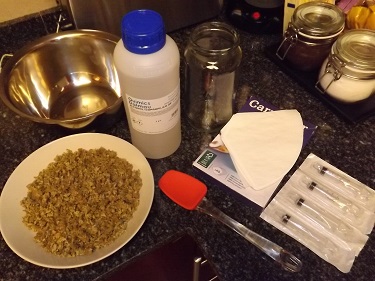 Typically I refer these people to articles and information available on the web, and for those who reside in or come to Barcelona, I often help them acquire cannabis products for use in the treatment of specific and general symptoms, usually related to cancer.
Typically I refer these people to articles and information available on the web, and for those who reside in or come to Barcelona, I often help them acquire cannabis products for use in the treatment of specific and general symptoms, usually related to cancer.
In one case a woman from the far north of Europe contacted me after being told by her doctors that there was little more that could be done to treat her cancer. She read about cannabis oil online and was referred to me by a homeopath in her country.
The woman, whom we will call Natalia in order to protect her identity, was diagnosed with breast cancer in 2012. After the usual run of chemotherapy, radiation and a mastectomy, she went into remission for only a short time before the cancer came back.
This time it spread to her bones and lymph nodes, and Natalia began to fear that she might not get to see her 3-year-old little girl grow up.
When I met Natalia she was just 33 years old, and she was quite ill although outwardly it was difficult to tell. We met twice over a 6-week period, and by the first week of the second meeting it was obvious that she was ill. The color was gone from her face, she became inexplicably, radically exhausted without warning and she had pain in her bones.
We produced about 4.5 grams of extremely potent cannabis oil using 30 grams of source material; the Dirty Dutch strain, which is predominantly indica. We used only freshly cured, raw flowers (buds) to produce the oil and Natalia began taking it immediately.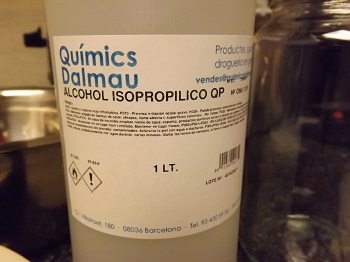
After taking the cannabis oil consistently for 7 days, Natalia improved markedly. The color came back to her skin, she was no longer exhausted and her pain disappeared. She began to smile and laugh; behavior I had not observed in her previously.
Therefore, while I cannot make any statement about the efficacy of cannabis oil as a cancer-fighting agent, I have personally witnessed how it can significantly improve the quality of life of that individual by reducing or eliminating pain, stimulating appetite, aiding in restorative sleep and treating specific symptoms related to cancer and cancer treatment agents.
With an improved quality of life comes a reduction in stress; a critical change considering that stress aggravates disease. So it could easily be argued that cannabis oil could extend the lives of cancer patients and others with certain severe illnesses by reducing stress and disease symptoms.
How Much Marijuana do you need?
The amount of marijuana required to produce cannabis oil depends on how much finished oil you are hoping to produce. In my opinion, starting with less than an ounce or about 30 grams of material isn’t worth it. An ounce of fine quality marijuana will yield approximately 4 grams of cannabis oil, which is enough to justify the process and risk involved for most people. Less than this is really more of a hassle than the result is worth.
Rick Simpson and others who are currently advocating the use of cannabis oil as medicine argue that a full course treatment for virtually any disease – most notably “all types of cancer” – will require approximately 60 grams of cannabis oil. This amount requires approximately 454 grams of marijuana, or .45 kilograms. However, you can make virtually any amount you choose, keeping in mind the basic principle that 30 grams of raw material will produce about 4 grams of oil.
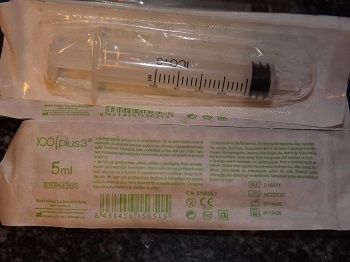 What Type of Marijuana do you need?
What Type of Marijuana do you need?
The general idea is to source a high quality Indica-dominant strain to make the oil. This is because Indica strains have a higher content of CBD than Sativa strains. Most people in the cannabis industry consider CBD to have a higher medical value than THC.
If you are able to source “medical strains,” such as Catatonic, which are genetically engineered to contain high amounts of CBD and low amounts of THC, this may be the most effective material to work with.
In my opinion, it is best to use well-cured flower (the buds must be dry) of a single strain. Do not mix and match strains.
I also do not recommend using scraps or trimmings to produce cannabis oil. I personally prefer to start with one single strain of highly potent Indica.
Ingredients & Equipment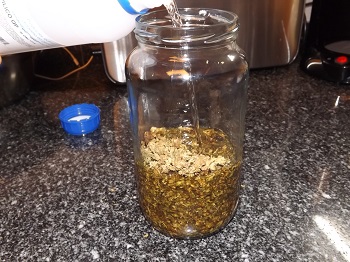
The following is the equipment and implements you will need to produce high quality cannabis oil:
CANNABIS
As discussed above. Chop or grind the cannabis moderately; this exposes the maximum surface area of the marijuana, which will help the solvent strip the plant material of its active compounds.
GLASS JARS
One large glass jar to wash the plant material with solvent. 2-3 smaller glass jars will be needed to collect the liquid from the washings.
FILTERS
The stronger the filter, the better. Coffee filters work but tear easily, which means that a great deal of the solvent mixture will be retained in the filter. A stronger filter takes more time to process the liquid, but allows you to use more pressure to squeeze out more of the wash.
RICE COOKER
An electric rice cooker will be used to boil off the solvent.
WARMING EQUIPMENT
A warming plate, coffee warmer, candle warmer or small skillet should be used to ensure that all water and solvent residue is evaporated.
SYRINGES
Plastic syringes are used to collect and store the finished cannabis oil.
RUBBER BANDS
Rubber bands are helpful for holding the filters in place over the glass jars.
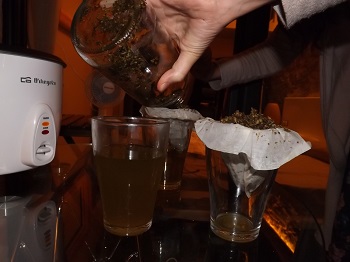 SOLVENT
SOLVENT
Any solvent used should be 100% pure. Naphtha, Benzine, Isopropyl are all good choices. I recommend Isopropyl because it is easy to obtain in most places and is generally pure or very close to it.
FAN
A fan should be used to direct the fumes away from the base of the rice cooker and processing table. This is important even if you are boiling the solvent outside.
ENVIRONMENT
An environment where all heat and flame sources can be rigidly controlled is critical.
SAFETY EQUIPMENT
Rubber gloves, goggles, and respirators are recommended.
STIRRING UTENSIL
You will need one utensil to stir the plant material while it is washing, and a rubber spatula to move the cannabis oil from one part of the process to the next and to prepare it for storage.
Making the Oil
STEP #1: WASH THE MARIJUANA
*Place moderately chopped/ground marijuana in large glass container
*Fill container to about 2 centimeters above the level of marijuana with solvent
*Carefully stir the marijuana around in the solvent for between three to fifteen minutes
STEP #2: FILTER THE WASH LIQUID
*Pour the marijuana and solvent into the filtered jars
*Have patience – allow the organic materials to drain slowly of all solvent
*While wearing rubber gloves, firmly ball up and squeeze the filters to collect all possible solvent wash
*Put the 1st wash cannabis back in the large glass jar
STEP #3: REPEAT STEPS #1 & #2
*Using the same organic material, repeat steps #1 and #2
*Discard the remaining cannabis after the second solvent washing
STEP #4: BOIL OFF THE SOLVENT
*Pour the wash liquid into the rice cooker
*Carefully boil off all solvent until only thick oil remains
*Collect oil and transfer to heating plate or warmer – let stand for several hours, or until all bubbling stops
STEP #5: PACKAGING & STORAGE
*Draw the cannabis oil up into the syringes while it is still warm
*Cap the end of the syringes and store them in a cool, dry and dark place
Congratulations – you now know how to make cannabis oil!
Dosage Information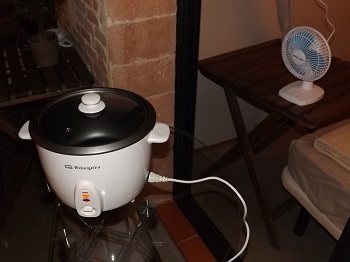
Because people use cannabis oil for many different ailments, and because each person is different, it is not possible to provide specific dosing information. However, the #1 rule to remember is to go slow at first and increase dosage over time. Many people say that a person with a terminal illness should eventually work their way up to taking 1 gram per day, but personally I think this is excessive. A half a gram of properly made cannabis oil is a substantial dose.
The best way to figure out what dosage is right for you or your loved one is to be methodical in your approach. Document how much cannabis you use to make the oil and of what type/variety and potency. Also record how much oil is made and label the oil according to batches.
Record daily dosing schedules and the effects of each. Record time of dose, amount, side effects, and note any reduction or elimination of primary or secondary symptoms.
By being methodical in this manner, you can figure out what dosing schedule works, and eliminate those that do not. This documentation will also be invaluable to your health care providers, and in the event that you are able to take part in a case study or even an academic study. Careful documentation of your experience with cannabis oil is the responsible thing to do.
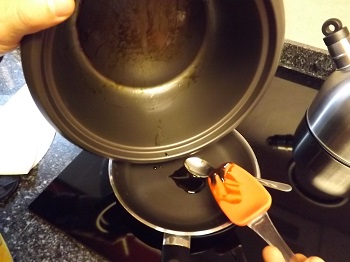 Recreational Use of Cannabis Oil
Recreational Use of Cannabis Oil
It is possible to get extremely high using cannabis oil. The oil is made the same way whether for medical or recreational purposes. However, recreational users of cannabis oil should be warned that overdosing is possible on this substance and can result in rather terrifying symptoms including extreme anxiety, paranoia, confusion, fainting, and sleep that may be difficult to wake up from in a normal manner.
Conclusion
Learning how to make cannabis oil is relatively easy, but learning how to properly use this substance is much more complicated. Moreover, because we do not have the studies or other evidence to show that cannabis oil is a legitimate cure for any major disease, we must treat this substance as a tool to alleviate symptoms and improve quality of life. If you have personal experience making or taking cannabis oil, please share your thoughts with us and other readers in the comments below.
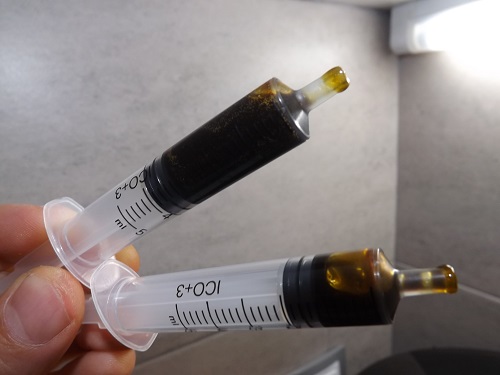
- Barcelona Cannabis Club Review: Green Age - March 23, 2022
- Things to do after Smoking Weed in Barcelona - March 2, 2022
- 9 Things You Need to Know about Cannabis Clubs in Madrid - February 15, 2022



7 thoughts on “How to Make Cannabis Oil”
I have made some of this oil.
Is there anywhere I can get it tested in Spain.
Kind regards.
Do u ever come to indian village called malana. Please taste.
I have some hash oil and has coconut oil in to use as an eatables can u vape this
Hola Michael; no, probably not a good idea to vape it if it has coconut oil in it…
I would like to buy some of this oil too. The ones I buy @ smoke shops are no good. I am in constant pain. I live in the Miami fl area
Where can i buy this oil in Netherlands?